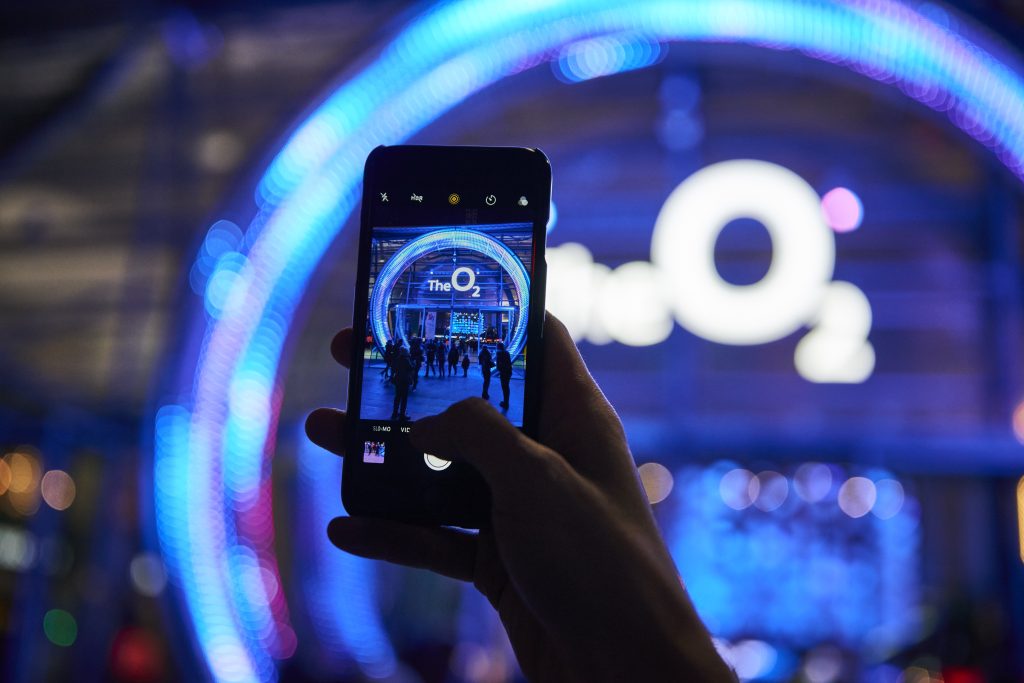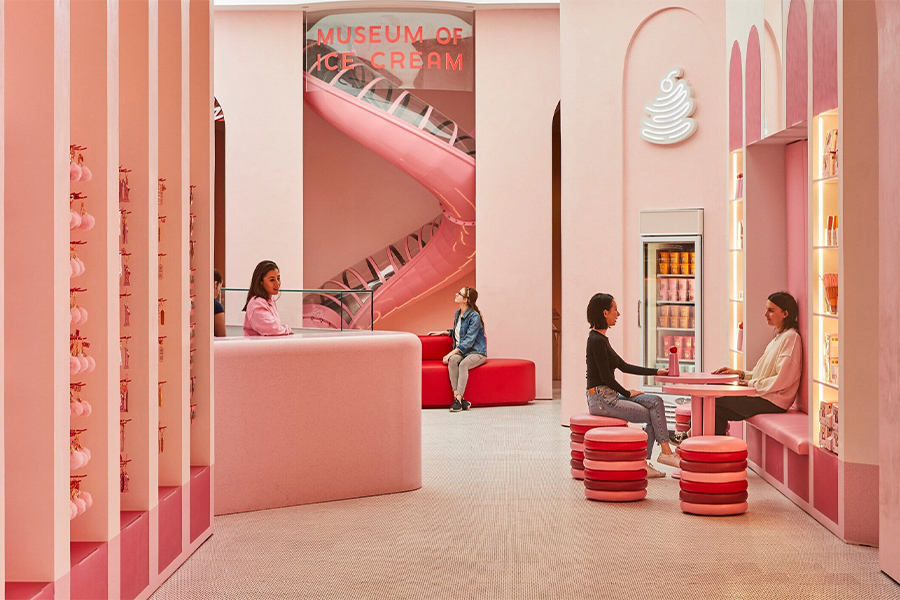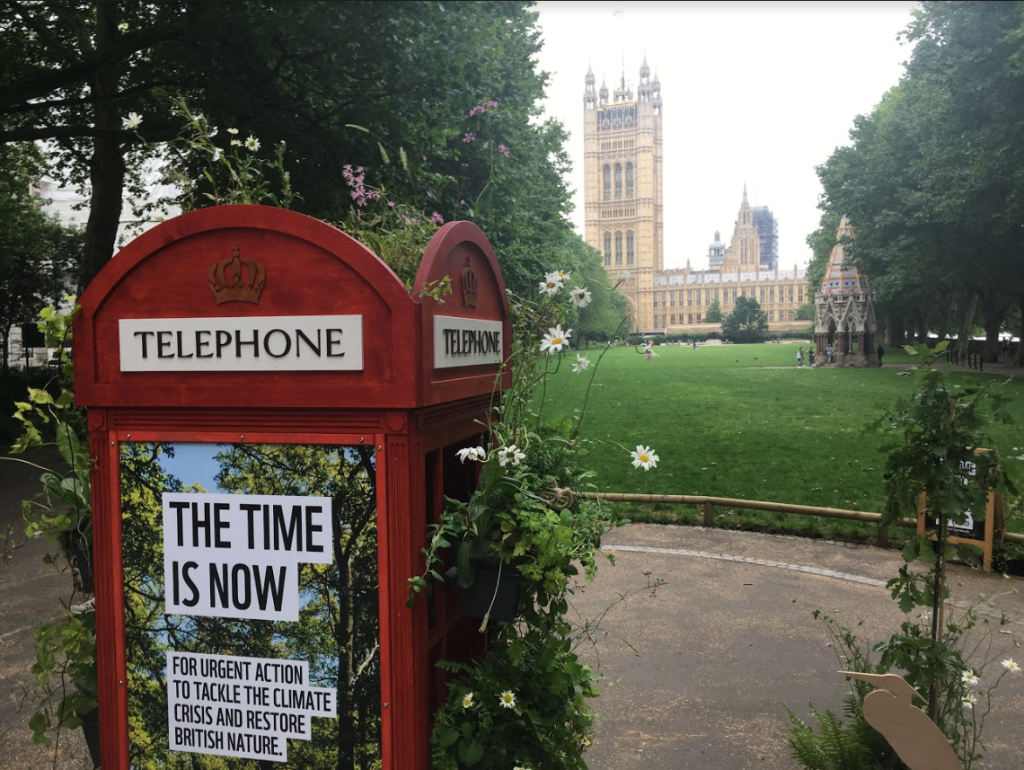Ralph Barker, New Business and Marketing Manager at Undercurrent, on how to prove to clients that when it comes to marketing “immersive” isn’t just a buzzword, but a targeted way to reach customers and differentiate their brand.
Over the last ten years, the growth in “experiential marketing” has risen dramatically to include a number of experiences that could legitimately be classed (in one way or another) as “immersive”.
However, what is increasingly unclear is to what extent one needs to be immersed in order to be considered immersive, the definitions and differences involved, and ultimately how to tie these factors to commercial goals.
Walk into any high-end boutique and you’ll likely be sensorially immersed without even realising it; an invisible cloud of signature scent winding itself teasingly around your wallet, designed to be associated with wealth and, by association, desire.
Simply put, brands have been peddling some form of psychological immersion on the public for decades without selling the experiences themselves as the product. All that the experiential marketing world did was find a way to commodify it.
Definition-wise, the world of the immersive can get messy. There’s “immersive”, sure. Following that we can add “experiential”, “promenade”, “sensory engagement”, and (more recently creeping into sales-forward vernacular during the pandemic), “phygital”.
The question then remains: how can we seek to detangle these words, ascribe them their correct definitions, and communicate the best types of immersive experiences for clients?
The answer, fundamentally, is nuanced.
Let’s start with the term “immersive”, as this is by far the most overused and misinterpreted word.
Simply put, for something to be immersive, we must be immersed in it. Picture being underwater in a bath (or other body of water – it matters little for the purposes of illustration). In this space, our bodies, and by association our senses, are surrounded in the fabric of ‘another world’ (in this example, water rather than air). Everything we see, hear, smell and feel is filtered through this fluid medium that cocoons us.
Much is the same with an immersive experience; we encounter our surroundings fully as though we have been submerged in them. Entertainment companies such as Punchdrunk and Secret Cinema have built their reputations on understanding this necessity.

A subtle but crucial difference here is to separate immersive theatre from what we could call immersive marketing.
Where immersive theatre makes the goal of entertainment a non-negotiable part of its practice, immersive marketing strives to take learnings from these forms of entertainment and assign clear commercial qualifiers to them.
Enter “Experiential”.
If we are to consider that both immersive theatre and immersive marketing require some form of audience immersion, we can see how the actual term “immersive” acts as a core from which two main offshoots emerge: “Marketing” and “Theatre”.
These formats have two distinct output goals, “Commercial” and “Entertainment”, with a natural crossover occurring in the middle (what we would class as the heart of this model: “Engagement”), and each leading to an output that corresponds to a specific audience.
Moving through this model, we could additionally ascribe further styles to these outputs (e.g., Live, Digital, Hybrid/Phygital) to further explore how an output could be created.
The method in which both formats can be further refined are “Experiential” and “Promenade” respectively. From here, we can start to tease apart the minutia of different forms and audience types they would attract and move to create an output that would appeal.
It is useful here to refer to a conversation had with Joe Pine (author of The Experience Economy) who segments audience types into the following levels of engagement depending on the level of participation:
As we can see from this matrix, the level of participation corresponds to whether an experience is passive or active, with full immersion represented by the “Divers” audience segment.
Approached from a commercial perspective, two more layers could incidentally be added: Lifeguards (agencies teaching clients to ‘swim’), and Landlubbers (experience creators who think one dimensionally about creating something “immersive”).
These audience definitions are incredibly useful to consider when creating an immersive experience regardless of which format it takes. On the entertainment side, audience participation and involvement vary depending on the style of output. A pop-up installation made for Instagram would for example be considered to be the most passive and ‘accessible’, whilst an immersive theatre production such as Punchdrunk’s The Burnt City, would sit on the other end of the scale and involve full, active immersion.
On the commercial side of the coin, different styles of interaction and immersion produce different outcomes and it may be that a combination of these are considered when creating a campaign. Interestingly, the idea of passive and active here do not necessarily correspond to different levels of engagement, but different results. If for example a client is seeking to create a social buzz, the best output to achieve a given goal may be an OOH pop-up that encourages social sharing through its instagrammable visuals rather than a theatrical brand experience.

In the same way, a targeted sampling campaign in an identified location of audience interest may provide the perfect complement to an existing social campaign to drive traffic and sales. If one wanted to encourage dwell time, providing the audience more autonomous agency within a sensorially designed activation allows them to essentially take on the role of ‘curious participant’ within a designed ‘set’, as one might expect from an evening at a piece of immersive theatre. The art is ultimately in understanding outcomes and variants of immersive engagement and applying these to brand/client data and needs.
As we begin to tease apart these levels of immersive experience and output styles, what we begin to see is value separated from association. Subsequently, it becomes easier (and faster) to create the right kind of experience for the right client when we begin to open these definitions up and explore the parameters of them, free from pretention and exclusivity, explaining in clear terms to clients what kind of experience would best promote their product and associated outcomes for their commercial goals based on audience data.
Regardless of output, it is essential to ensure that the audience member receives two key outcomes from the experience to drive conversion, no matter how brief their interaction:
- Product in hand
- An understanding of what sets the brand apart (from competitors)
The first of these is easy enough to create in both a passive or active immersive experience.
A consumer enters a space, walks by a booth or otherwise engages with a product offering. Assuming their need for such a product has been pre-identified (as it very much should be in order to convert), they will find themselves interacting with the product in some meaningful way.
Providing a tactile moment of anticipation with the product helps to build an emotional memory of joy for the consumer, associating the product offering with happiness and positive sentiment which in turn helps to convert them from a passive consumer to a loyal brand guardian. Equally, creating an experience that provides a moment of unexpectedness, with clear identifiers as to why it is more exciting/socially valuable, ensures that regardless of how long it takes a sales lead to convert, the associated memory will stay firmly rooted when a need for purchase arises.
At The Current Collective we recently worked with WWF to create a custom overgrown phone booth oasis to raise public awareness of nature depletion and climate change in the UK. This piece of OOH experiential placed the audience directly inside an environment that invited the audience to interact with a phone where they could record a voicemail to demand change.

Tying together an unexpected encounter (an overgrown phonebooth) with an emotionally charged subject (the voicemails), helped to raise awareness of the brand beyond initial expectation (in this instance, saving pandas), and delivery of charged social impressions to drive results (messages delivered to MPs).
The more one looks for these segmented styles of immersive marketing, the better they become at understanding the benefits of differentiating and formulating activations in line with immersive outcomes. In stepping through the looking glass to the world of immersive theatre, it becomes easier to tailor creative responses in line with what a client hopes to achieve, and clearly break down what the benefits of each would be.
Put simply, the commercial benefits of experiential marketing come from understanding the benefits of each style of immersive output in relation to client needs, and how elements of a brief can be covered by utilising immersive strategy in this way.
To quote Pine:
“Experiential marketing enables consumers to not just buy products or services from a brand, but to actually experience the brand.”
Joe Pine
To get more insights from experts in the Experience Economy – and to be the first to know about our membership programme, events and more – apply to join The WXO here.





